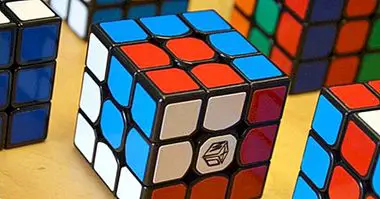Spaced repetition (technique to memorize): what it is and how to use it
In recent years, the use of mnemonic strategies has been popularized and systematized, which allows to learn very complex information in relatively simple ways. These techniques include the loci method, the hangers method, the memory palace or the spaced repetition.
In this article we will describe what is the technique of the spaced review and we will explain how to apply it to memorize large amounts of information. We will also talk about the effect of spaced memory, a psychological phenomenon that explains the effectiveness of this mnemonic.
- Related article: "The loci method, almost infallible to remember anything"
What is spaced repetition?
Spaced repetition, also known as spaced review, is a rote learning technique that consists of learn a certain material by letting more and more time slots pass between one training session and the next.
This technique is used to memorize content and practice skills over time, rather than intensively for a short period of time. The space between trainings increases progressively as the learning solidifies in order to use the effect of spaced memory, which we will talk about later.
This spacing of the learning allows a greater maintenance of the memory: each time that the memorization exercises are practiced a new review of the information that is being worked on is carried out. Even intensive learning tends to be maintained to a lesser extent if regular practices are not carried out later.
The spaced repetition is especially useful when you want to memorize and permanently learn a large number of different elements. Examples of this can be the mathematical formulas or the vocabulary of a foreign language.
Also the advances that have taken place in the last decades in the field of computing have favored the emergence of computer-assisted learning methods. Many of these are based on the spacing technique, or allow it to be applied easily.
- Maybe you're interested: "What is declarative memory?"
The memory effect spaced
Hermann Ebbinghaus, a pioneer of the experimental study of memory who lived in the second half of the nineteenth century, described two phenomena that gave him a place in the history of psychology: the curve of forgetfulness, which represents the duration of the memory traces if a subsequent review of learning is not applied, and the memory effect spaced.
According to Ebbinghaus and other later authors, When learning is distributed over time, information is retained better that if carried out in a single session. In the first case we speak of a spaced presentation of the content, and in the second one of massive presentation.
This implies, for example, that if we study for 6 hours for an exam the night before it, after a few days or a few weeks we will have forgotten a greater proportion of what we learned than if we had distributed those 6 hours between several days. However, the superiority of spaced learning is not so clear in the short term.
There are different hypotheses about the causes of this effect; all of them can be true in relation to different types of learning and information retrieval (such as free recall and clues). In this sense highlight the phenomena of semantic priming and neuronal potentiation long-term.
- Related article: "The limits and failures of human memory"
How is this technique used?
The most common method of applying the spaced repetition technique It begins with the division of information into small blocks of content. In some cases this is easier than in others; For example, you can study vocabulary using short definitions, but to memorize historical episodes it will be necessary to outline or summarize the information.
Necessary understand the content you want to memorize before preparing the training ; this will facilitate that the relationships between the different elements are captured and avoid possible errors in the preparation of the learning material. It is also convenient to divide the information as much as possible to facilitate the retention of each element.
Then the elements that you want to learn must be distributed in some kind of physical or virtual support. Cards can be used, but there is computer software which facilitates the use of spaced repetition, such as the Mnemosyne, Anki and Mnemodo applications. There are also specific programs for language spaced learning.
Two particularly popular card types are those that leave spaces that must be filled in by the apprentice (eg, "Trigeminal is the _ of the 12 cranial pairs") and those that include a question and an answer. The latter can be prepared by writing a question on one side and the corresponding answer on the other.
The time intervals between learning sessions and the duration of the total learning period depend on the needs and preferences of the person applying the technique. The most important thing is to keep in mind that the memorization exercises should be more frequent at the beginning and be progressively spaced until the learning reaches the desired level.



















